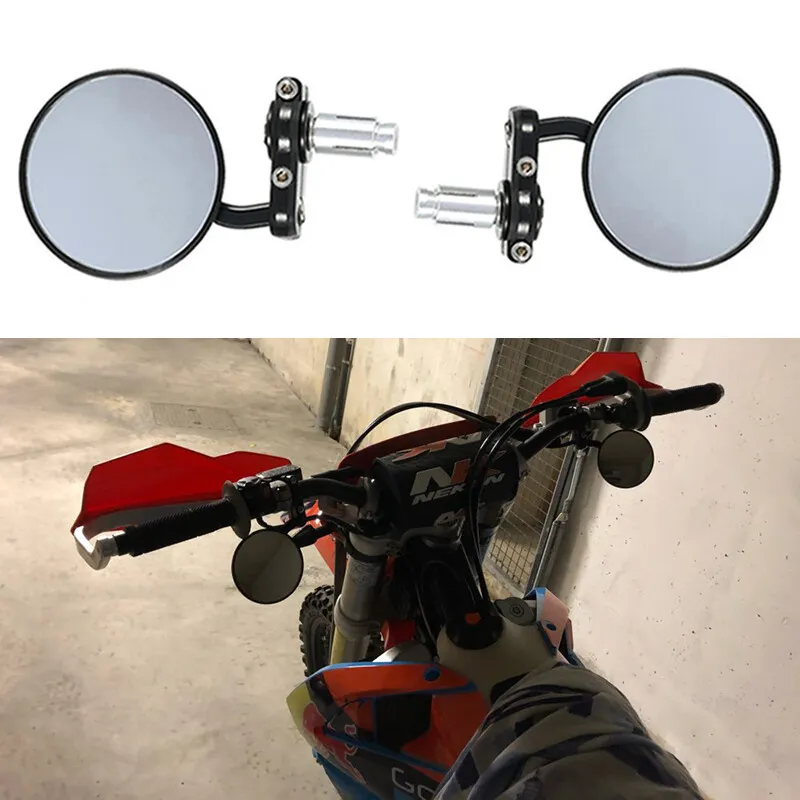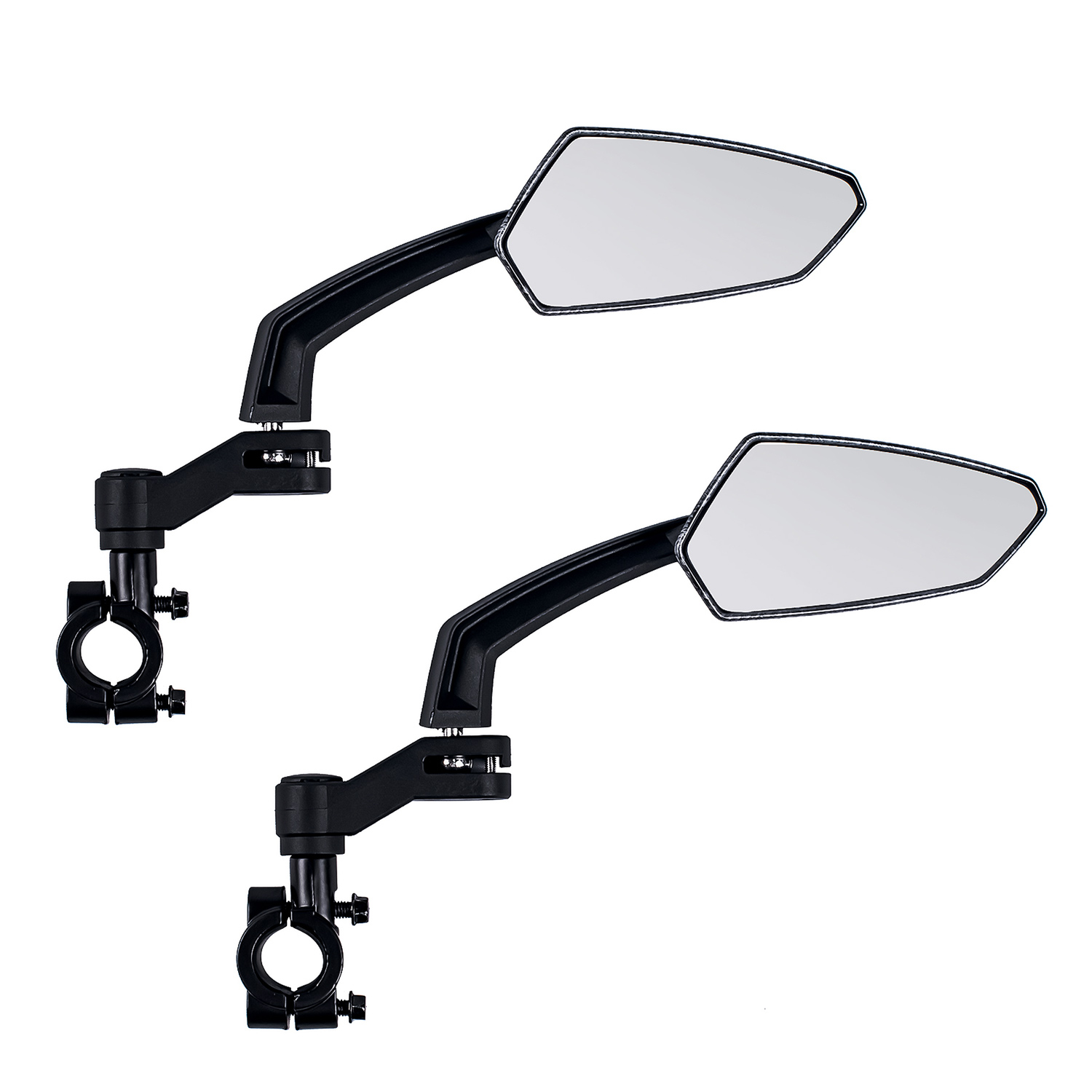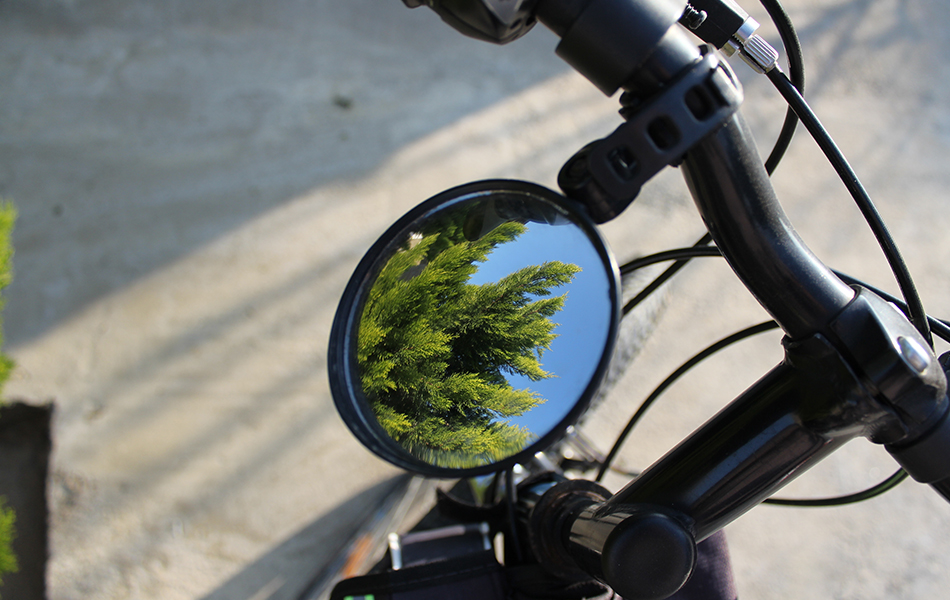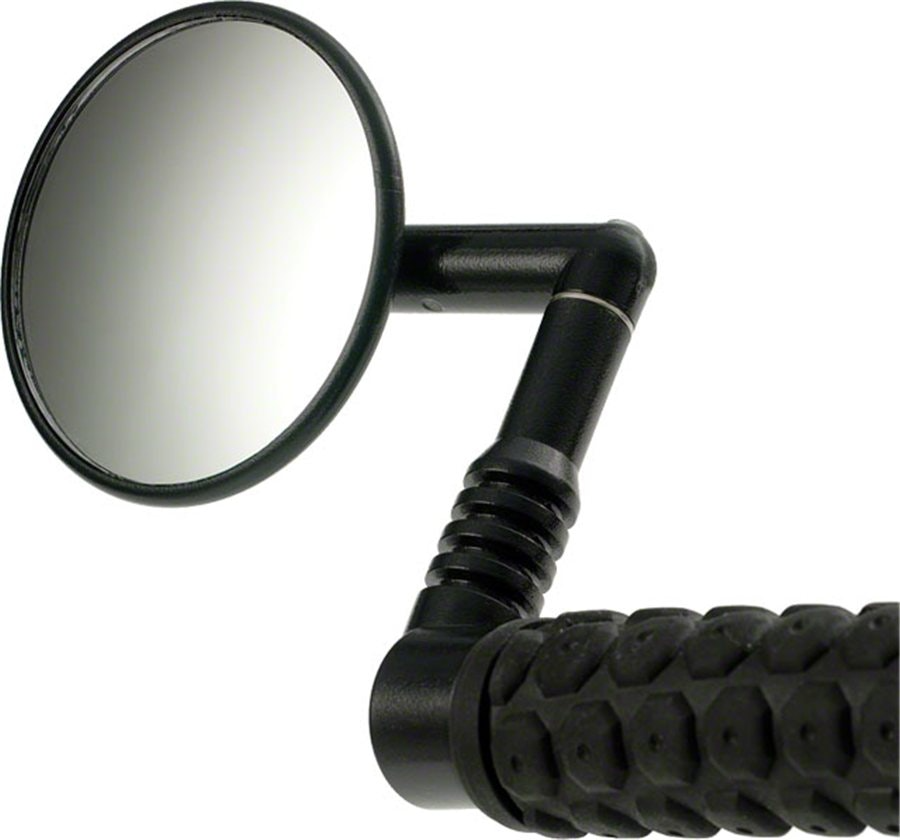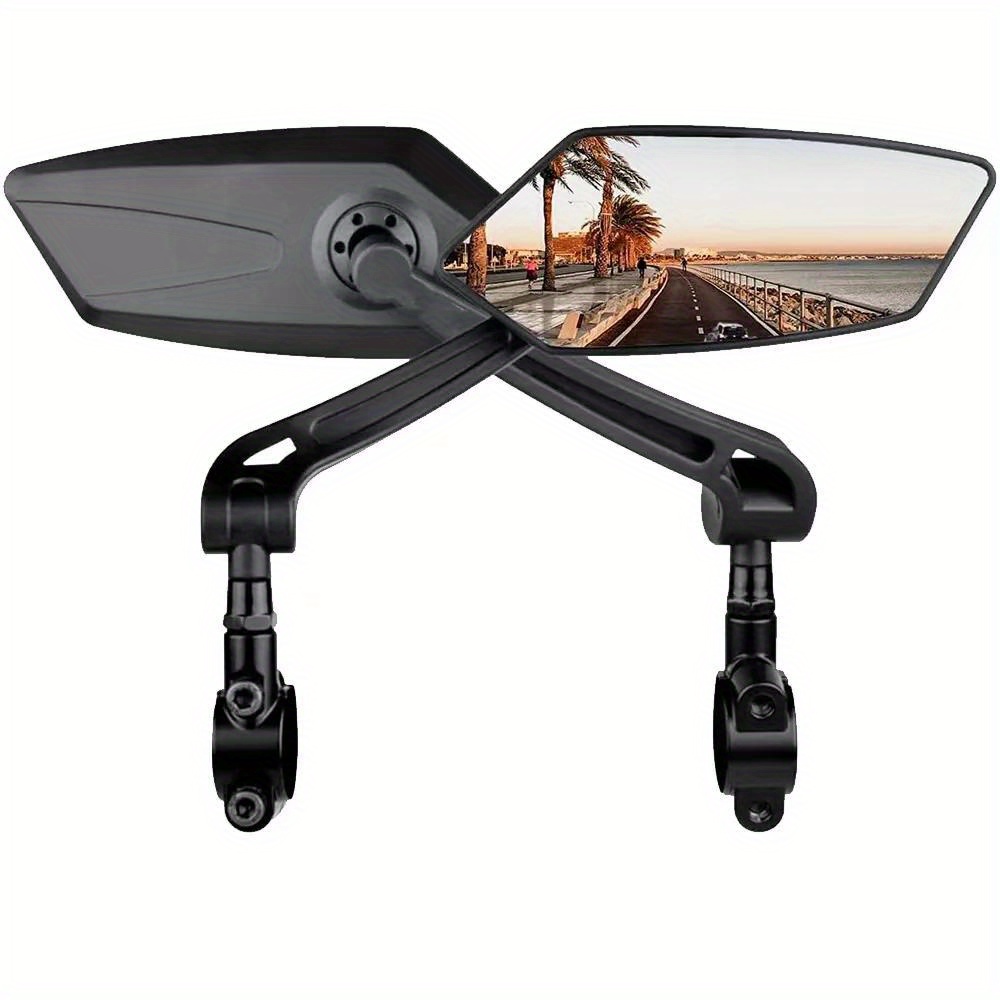1. Introduction to Bicycle Mirrors: Enhancing Rider Awareness
Bicycle mirrors serve as an essential safety accessory for cyclists, providing a clear view of the rider’s surroundings without turning their head or taking their eyes off the road ahead. By reducing blind spots and increasing situational awareness, they contribute significantly to accident prevention and enhance overall riding experience.
2. Types of Bicycle Mirrors: Understanding Your Options
Handlebar-mounted mirrors:
These are perhaps the most common type, attached directly to the handlebars, usually with a flexible stalk allowing for adjustment. They can be convex in shape to offer a wide-angle view of the rear traffic.
Helmet-mounted mirrors:
Lightweight and portable, these attach to the cyclist’s helmet, offering a unique vantage point that follows the rider’s head movement. They are especially useful for those who frequently change positions on the bike or prefer a more dynamic field of vision.
Frame-mounted mirrors:
Installed near the bike’s headset or onto the end of the fork, frame-mounted mirrors provide a sleek, integrated look while maintaining visibility. They’re popular among commuters and touring cyclists who desire a constant view of the road behind them.
Eyeglass-mounted mirrors:
These miniature mirrors clip onto the temples of eyewear, giving cyclists a subtle yet effective way to monitor their environment without altering their bike’s setup.
3. Key Considerations When Selecting the Right Bicycle Mirror
Choosing a bicycle mirror is not just about picking the first one you see; it requires careful evaluation based on several key factors that will determine its effectiveness and suitability for your needs. Here’s an in-depth look at these critical considerations:
1. Field of View (FOV)
The field of view is the most important aspect to consider when choosing a bike mirror. A wider FOV allows you to monitor more of the area behind you, reducing blind spots. However, too wide a view may lead to distorted images or difficulty focusing on specific objects. Look for mirrors that offer a balance between a broad scope and clear image quality. Convex mirrors are commonly used as they provide a wide-angle view while maintaining a reasonable level of detail.
2. Durability and Build Quality
A high-quality mirror should withstand the rigors of daily use, including vibrations, impacts, and weather conditions. Choose materials like aluminum or strong plastics that can hold up over time. The mounting mechanism should also be robust and secure to prevent the mirror from shaking loose or breaking during rides.
3. Adjustability and Compatibility
The best bicycle mirrors offer easy and precise adjustments. This means you can angle the mirror to reflect your desired viewing area without it slipping out of place. Check if the mirror is compatible with your bike’s handlebar diameter or helmet model, or whether it has universal fitting capabilities.
4. Size and Design
Consider the size of the mirror itself. Larger mirrors tend to provide a better view but might create wind resistance or catch on clothing. Smaller mirrors may be less obtrusive but might have a narrower FOV. For helmet-mounted mirrors, lightweight and aerodynamic designs are crucial.
5. Visibility and Clarity
Mirrors with anti-glare coatings or those that can be adjusted for optimal reflection are ideal, especially during bright sunlight hours. Clear glass or acrylic lenses ensure a crisp, distortion-free reflection.
6. Ease of Installation and Removal
For versatile riders who switch between different bikes or riding styles, quick-release mechanisms are invaluable. They allow for easy installation, removal, and adjustment according to your needs.
7. Style and Integration
While functionality comes first, style and integration into your bike’s aesthetics may also be a factor for some cyclists. Many modern mirrors feature sleek designs that blend seamlessly with various types of bicycles, enhancing both safety and style.
By carefully considering these key factors, you can select a bicycle mirror that not only enhances your safety on the road but also complements your cycling experience.
4. Installing and Using Bicycle Mirrors Effectively
Proper installation and use are crucial for maximizing the benefits of a bicycle mirror. Position the mirror so that it reflects the area behind and slightly to the side of your bike. This allows you to see approaching vehicles or cyclists without needing to turn around. Regularly check and adjust the mirror as necessary to maintain optimal visibility.
5. Benefits Beyond Safety: Enhancing Cycling Experience
While safety is the primary reason for installing a bicycle mirror, its benefits extend far beyond mere accident prevention. Here are five ways in which a well-chosen bike mirror can significantly enhance your overall cycling experience:
1. Increased Awareness and Relaxation
A rearview mirror keeps you informed about approaching vehicles or cyclists from behind, allowing you to anticipate their movements and react accordingly. This heightened awareness reduces stress levels as you no longer need to constantly turn around to check your surroundings, enabling you to maintain a more relaxed and steady pace.
Mirrors can assist with navigating complex intersections, roundabouts, and narrow paths where a clear view of what’s coming up behind you is crucial. Additionally, they enable you to appreciate your surroundings better by providing a constant view of the landscape as you ride without needing to take your eyes off the road ahead.
3. Enhanced Group Riding
When riding in a group or peloton, mirrors help maintain safe distances between riders and allow you to communicate effectively with hand signals. You can keep track of your fellow cyclists, ensuring everyone stays together while also being aware of any overtaking vehicles.
4. Traffic Interaction Management
Bike mirrors facilitate smooth interaction with traffic by giving you real-time information about cars or other vehicles approaching from behind. This allows you to make informed decisions on when to move over, signal turns, or pass safely, promoting a harmonious relationship between cyclists and motorists.
5. Mental Energy Conservation
By reducing the mental strain of frequently checking your blind spots, a bicycle mirror conserves your mental energy for more important aspects of cycling, such as route planning, pacing, and enjoying the ride itself. This leads to a more enjoyable and sustainable cycling experience over long distances.
In summary, while the core purpose of a bicycle mirror is to ensure rider safety, it also plays a significant role in making cycling more comfortable, controlled, and immersive. It’s a small accessory that can have a substantial impact on how much you enjoy your time on the bike.
6. Debunking Myths About Bicycle Mirrors
Despite their advantages, some cyclists still debate the need for mirrors. Common misconceptions include the belief that mirrors create distractions, which can be negated by choosing a mirror with minimal vibration and adjusting it correctly. Another myth is that mirrors replace the need to look over one’s shoulder, which is not true; mirrors augment visual awareness, but looking back remains a fundamental aspect of safe cycling.
7. Innovations and Future Developments
Advancements in technology have led to the development of smart mirrors that integrate with devices, displaying information like GPS navigation or incoming calls. Some prototypes even incorporate cameras and sensors, projecting real-time images to give cyclists a panoramic view of their surroundings.
Conclusion
In conclusion, bicycle mirrors are a valuable addition to any cyclist’s toolkit, contributing significantly to safety and comfort on the road. By understanding their types, key considerations, and proper usage, cyclists can make informed decisions about incorporating a mirror into their riding setup, enhancing their overall experience and promoting a safer cycling culture.
